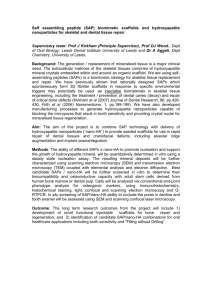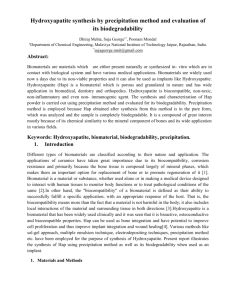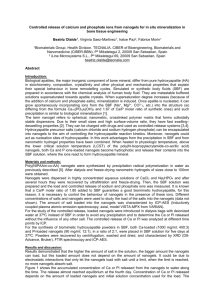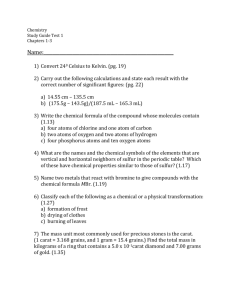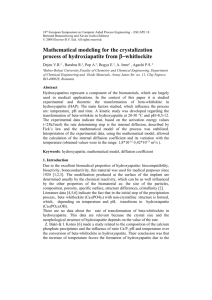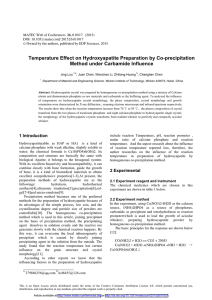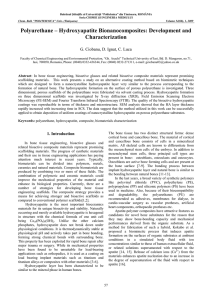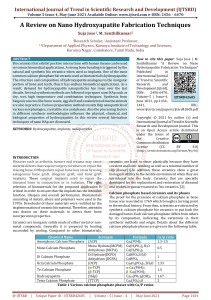Document 12922357
advertisement
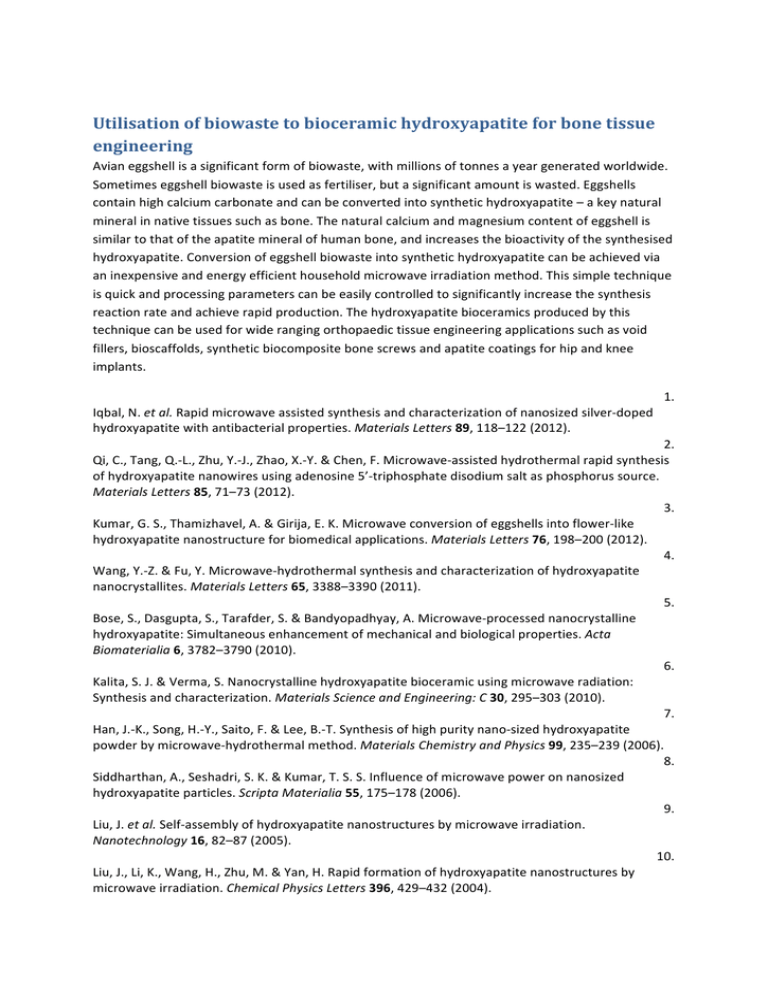
Utilisation of biowaste to bioceramic hydroxyapatite for bone tissue engineering Avian eggshell is a significant form of biowaste, with millions of tonnes a year generated worldwide. Sometimes eggshell biowaste is used as fertiliser, but a significant amount is wasted. Eggshells contain high calcium carbonate and can be converted into synthetic hydroxyapatite – a key natural mineral in native tissues such as bone. The natural calcium and magnesium content of eggshell is similar to that of the apatite mineral of human bone, and increases the bioactivity of the synthesised hydroxyapatite. Conversion of eggshell biowaste into synthetic hydroxyapatite can be achieved via an inexpensive and energy efficient household microwave irradiation method. This simple technique is quick and processing parameters can be easily controlled to significantly increase the synthesis reaction rate and achieve rapid production. The hydroxyapatite bioceramics produced by this technique can be used for wide ranging orthopaedic tissue engineering applications such as void fillers, bioscaffolds, synthetic biocomposite bone screws and apatite coatings for hip and knee implants. 1. Iqbal, N. et al. Rapid microwave assisted synthesis and characterization of nanosized silver-­‐doped hydroxyapatite with antibacterial properties. Materials Letters 89, 118–122 (2012). 2. Qi, C., Tang, Q.-­‐L., Zhu, Y.-­‐J., Zhao, X.-­‐Y. & Chen, F. Microwave-­‐assisted hydrothermal rapid synthesis of hydroxyapatite nanowires using adenosine 5’-­‐triphosphate disodium salt as phosphorus source. Materials Letters 85, 71–73 (2012). 3. Kumar, G. S., Thamizhavel, A. & Girija, E. K. Microwave conversion of eggshells into flower-­‐like hydroxyapatite nanostructure for biomedical applications. Materials Letters 76, 198–200 (2012). 4. Wang, Y.-­‐Z. & Fu, Y. Microwave-­‐hydrothermal synthesis and characterization of hydroxyapatite nanocrystallites. Materials Letters 65, 3388–3390 (2011). 5. Bose, S., Dasgupta, S., Tarafder, S. & Bandyopadhyay, A. Microwave-­‐processed nanocrystalline hydroxyapatite: Simultaneous enhancement of mechanical and biological properties. Acta Biomaterialia 6, 3782–3790 (2010). 6. Kalita, S. J. & Verma, S. Nanocrystalline hydroxyapatite bioceramic using microwave radiation: Synthesis and characterization. Materials Science and Engineering: C 30, 295–303 (2010). 7. Han, J.-­‐K., Song, H.-­‐Y., Saito, F. & Lee, B.-­‐T. Synthesis of high purity nano-­‐sized hydroxyapatite powder by microwave-­‐hydrothermal method. Materials Chemistry and Physics 99, 235–239 (2006). 8. Siddharthan, A., Seshadri, S. K. & Kumar, T. S. S. Influence of microwave power on nanosized hydroxyapatite particles. Scripta Materialia 55, 175–178 (2006). 9. Liu, J. et al. Self-­‐assembly of hydroxyapatite nanostructures by microwave irradiation. Nanotechnology 16, 82–87 (2005). 10. Liu, J., Li, K., Wang, H., Zhu, M. & Yan, H. Rapid formation of hydroxyapatite nanostructures by microwave irradiation. Chemical Physics Letters 396, 429–432 (2004).

